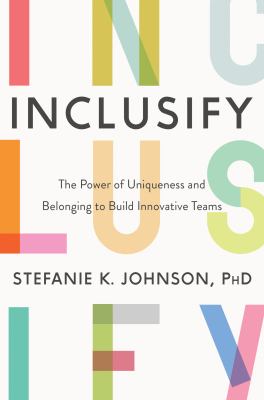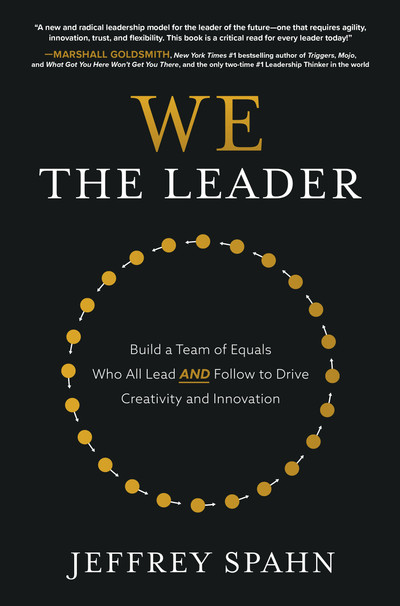Skip to Main Content

eBooks
-
 Badly Behaved People: How to deal with idiots at work (2024)
"Badly Behaved People" is not your typical business book; it features a unique format that combines elements of a business guide with an agony aunt approach. The book addresses 15 common problem personalities through real-life case studies.
Badly Behaved People: How to deal with idiots at work (2024)
"Badly Behaved People" is not your typical business book; it features a unique format that combines elements of a business guide with an agony aunt approach. The book addresses 15 common problem personalities through real-life case studies.
-
 The 5 Truths for Transformational Leaders (2023)
Use mission-driven leadership to create dramatic growth at your nonprofit delivers an insightful and practical discussion of how to achieve extraordinary results when leading nonprofit organizations.
The 5 Truths for Transformational Leaders (2023)
Use mission-driven leadership to create dramatic growth at your nonprofit delivers an insightful and practical discussion of how to achieve extraordinary results when leading nonprofit organizations.
-
-
-
 Do You Care to Lead? (2020)
Through Michael's five-part SONIC leadership formula, you will become a Care to Lead Leader. You will discover: One simple Care to Lead Leader practice that can literally revolutionize the culture of your teams and/or organizations. How to build real trust on your teams and/or organizations and explode creativity and the volume of ideas. How to have more courage and second guess yourself less.
Do You Care to Lead? (2020)
Through Michael's five-part SONIC leadership formula, you will become a Care to Lead Leader. You will discover: One simple Care to Lead Leader practice that can literally revolutionize the culture of your teams and/or organizations. How to build real trust on your teams and/or organizations and explode creativity and the volume of ideas. How to have more courage and second guess yourself less.
-
 The art of leadership : small things, done well (2020)
Many people think leadership is a higher calling that resides exclusively with a select few who practice and preach big, complex leadership philosophies. But as this practical book reveals, what's most important for leadership is principled consistency.
The art of leadership : small things, done well (2020)
Many people think leadership is a higher calling that resides exclusively with a select few who practice and preach big, complex leadership philosophies. But as this practical book reveals, what's most important for leadership is principled consistency.
-
 Bad boss : what to do if you work for one, manage one or are one (2020)
In a tough or toxic work environment, are you brave enough to challenge your own thinking and shift your own perspective to make relationships work? Bad Boss is for anyone who is in -- or who is keen to avoid -- a negative workplace environment characterised by ineffective leadership.
Bad boss : what to do if you work for one, manage one or are one (2020)
In a tough or toxic work environment, are you brave enough to challenge your own thinking and shift your own perspective to make relationships work? Bad Boss is for anyone who is in -- or who is keen to avoid -- a negative workplace environment characterised by ineffective leadership.
Books in the Library
-
-
 The 21 Irrefutable Laws of Leadership (2022)
The 21 Irrefutable Laws of Leadership;is essential reading for anyone looking to better understand what it takes to be a great leader and achieve success in their chosen profession.
The 21 Irrefutable Laws of Leadership (2022)
The 21 Irrefutable Laws of Leadership;is essential reading for anyone looking to better understand what it takes to be a great leader and achieve success in their chosen profession.
-
 Australian management essentials (2020)
Australian Management Essentials is the most comprehensive book about management available. This invaluable reference covers all topics essential to senior managers, front-line managers and supervisors.
Australian management essentials (2020)
Australian Management Essentials is the most comprehensive book about management available. This invaluable reference covers all topics essential to senior managers, front-line managers and supervisors.
-
 Inclusify (2020)
By learning why uniqueness and belonging are so imperative, leaders can better understand what makes their employees tick and find ways to encourage them to be themselves while ensuring they feel like they are fully part of the group.
Inclusify (2020)
By learning why uniqueness and belonging are so imperative, leaders can better understand what makes their employees tick and find ways to encourage them to be themselves while ensuring they feel like they are fully part of the group.
Websites
-
-
Building Good Workplace Relationships
In this article, we're looking at how you can build strong, positive relationships at work. We'll see why it's important to have good working relationships, and we'll look at how to strengthen your relationships with people that you don't naturally get on with.
-
Leadership Styles in Management
A leader is a person who influences a group of people towards the achievement of a goal while leadership is the art of motivating a group of people to act towards achieving a common goal. Different leadership styles will result in different impact to organization. The leader has to choose the most effective approach of leadership style depending on situation because leadership style is crucial for a team success. By understanding these leadership styles and their impact, everyone can become a more flexible and better leader.
-
Six Leadership Styles
Daniel Goleman, in his article “Leadership That Gets Results”, has identified six different leadership styles, and he believes that good leaders will adopt one of these six styles to meet the needs of different situations.
-
10 Proven Business Leadership Tips and Advice for 2025
There’s no doubt about it: leadership is hard work and there are so many theories, courses, and tips out there asking us to lead in a particular way. And while leadership naturally asks us to evolve, pivot, and renegotiate what that role means and how it should be executed, we also have to make sure we’re carving out time to rest and replenish ourselves.

 Badly Behaved People: How to deal with idiots at work (2024)
"Badly Behaved People" is not your typical business book; it features a unique format that combines elements of a business guide with an agony aunt approach. The book addresses 15 common problem personalities through real-life case studies.
Badly Behaved People: How to deal with idiots at work (2024)
"Badly Behaved People" is not your typical business book; it features a unique format that combines elements of a business guide with an agony aunt approach. The book addresses 15 common problem personalities through real-life case studies.
 The 5 Truths for Transformational Leaders (2023)
Use mission-driven leadership to create dramatic growth at your nonprofit delivers an insightful and practical discussion of how to achieve extraordinary results when leading nonprofit organizations.
The 5 Truths for Transformational Leaders (2023)
Use mission-driven leadership to create dramatic growth at your nonprofit delivers an insightful and practical discussion of how to achieve extraordinary results when leading nonprofit organizations.
 7 secrets of great leaders: use what they know to get to the top (2023)
Let go of your fixed mindset and bad habits that are holding you back and start building a growth mindset with the good habits that will help you flourish as a leader.
7 secrets of great leaders: use what they know to get to the top (2023)
Let go of your fixed mindset and bad habits that are holding you back and start building a growth mindset with the good habits that will help you flourish as a leader.
 We the Leader: Build a Team of Equals Who All Lead and Follow to Drive Creativity and Innovation (2022)
Lead your company to success in the age of disruption with this groundbreaking new leadership paradigm. We live in a constantly changing world with new technologies introduced daily, perpetual connectivity, and relentless pressures to do more, faster, better.
We the Leader: Build a Team of Equals Who All Lead and Follow to Drive Creativity and Innovation (2022)
Lead your company to success in the age of disruption with this groundbreaking new leadership paradigm. We live in a constantly changing world with new technologies introduced daily, perpetual connectivity, and relentless pressures to do more, faster, better.
 The art of leadership : small things, done well (2020)
Many people think leadership is a higher calling that resides exclusively with a select few who practice and preach big, complex leadership philosophies. But as this practical book reveals, what's most important for leadership is principled consistency.
The art of leadership : small things, done well (2020)
Many people think leadership is a higher calling that resides exclusively with a select few who practice and preach big, complex leadership philosophies. But as this practical book reveals, what's most important for leadership is principled consistency.
 Bad boss : what to do if you work for one, manage one or are one (2020)
In a tough or toxic work environment, are you brave enough to challenge your own thinking and shift your own perspective to make relationships work? Bad Boss is for anyone who is in -- or who is keen to avoid -- a negative workplace environment characterised by ineffective leadership.
Bad boss : what to do if you work for one, manage one or are one (2020)
In a tough or toxic work environment, are you brave enough to challenge your own thinking and shift your own perspective to make relationships work? Bad Boss is for anyone who is in -- or who is keen to avoid -- a negative workplace environment characterised by ineffective leadership.
 Leadership & management : theory & practice ; 8th edition. (2023)
You will learn models and frameworks that you can use in leadership and management situations, as well as leading-edge information about the science and art of management that you can put into practice in your own way.
Leadership & management : theory & practice ; 8th edition. (2023)
You will learn models and frameworks that you can use in leadership and management situations, as well as leading-edge information about the science and art of management that you can put into practice in your own way.
 The 21 Irrefutable Laws of Leadership (2022)
The 21 Irrefutable Laws of Leadership;is essential reading for anyone looking to better understand what it takes to be a great leader and achieve success in their chosen profession.
The 21 Irrefutable Laws of Leadership (2022)
The 21 Irrefutable Laws of Leadership;is essential reading for anyone looking to better understand what it takes to be a great leader and achieve success in their chosen profession.
 Australian management essentials (2020)
Australian Management Essentials is the most comprehensive book about management available. This invaluable reference covers all topics essential to senior managers, front-line managers and supervisors.
Australian management essentials (2020)
Australian Management Essentials is the most comprehensive book about management available. This invaluable reference covers all topics essential to senior managers, front-line managers and supervisors.
 Inclusify (2020)
By learning why uniqueness and belonging are so imperative, leaders can better understand what makes their employees tick and find ways to encourage them to be themselves while ensuring they feel like they are fully part of the group.
Inclusify (2020)
By learning why uniqueness and belonging are so imperative, leaders can better understand what makes their employees tick and find ways to encourage them to be themselves while ensuring they feel like they are fully part of the group.